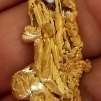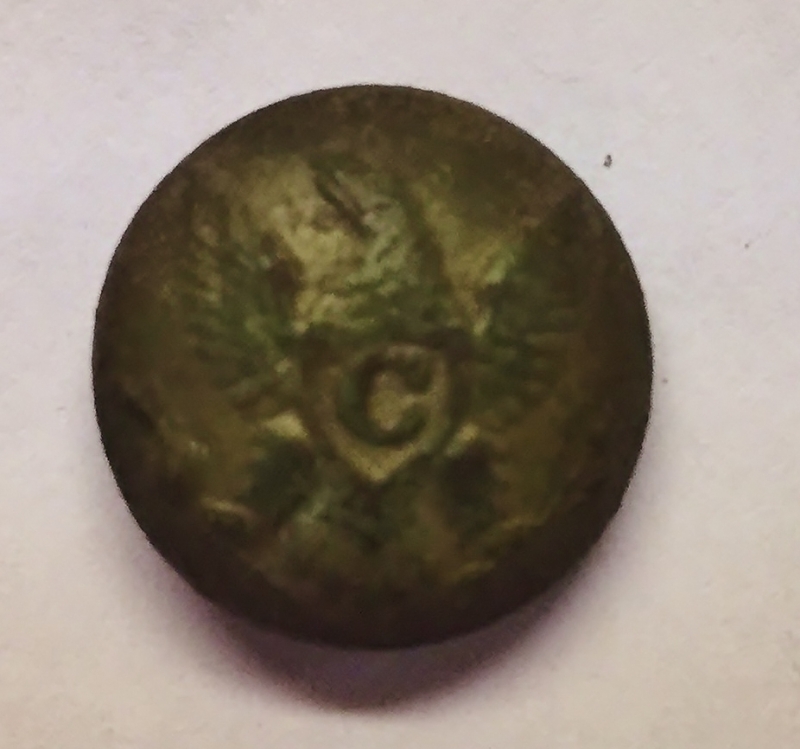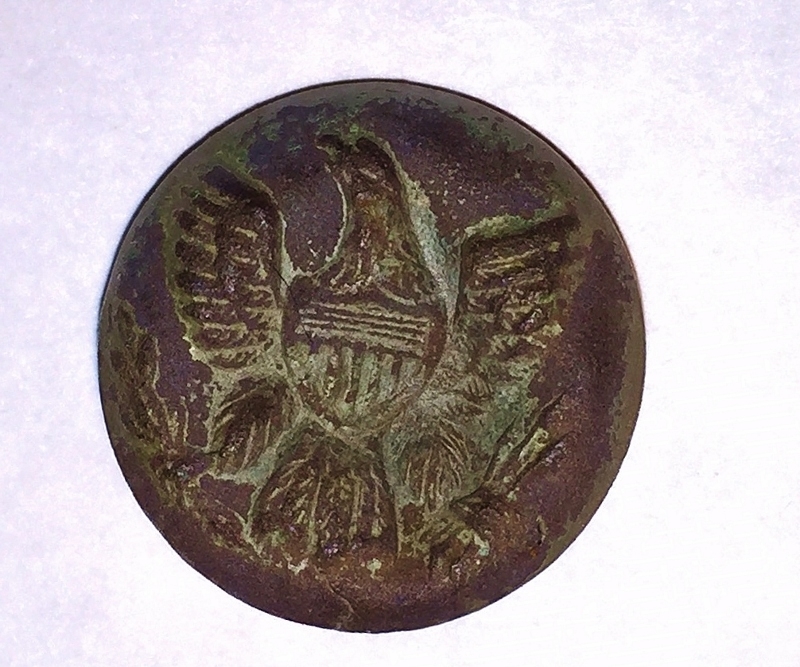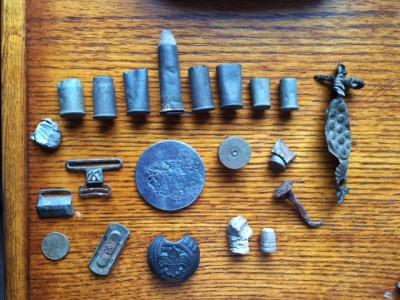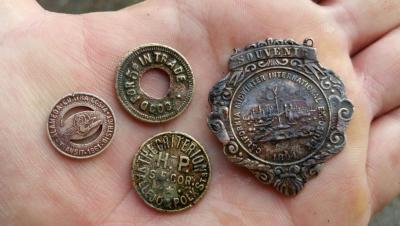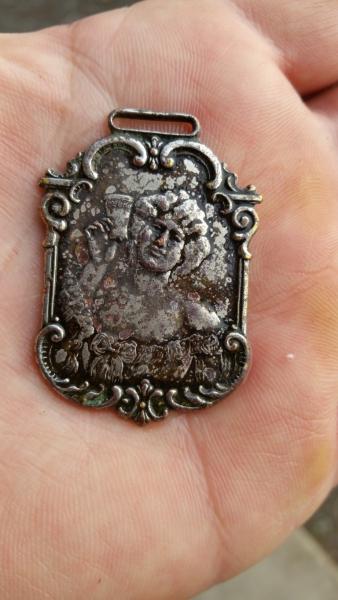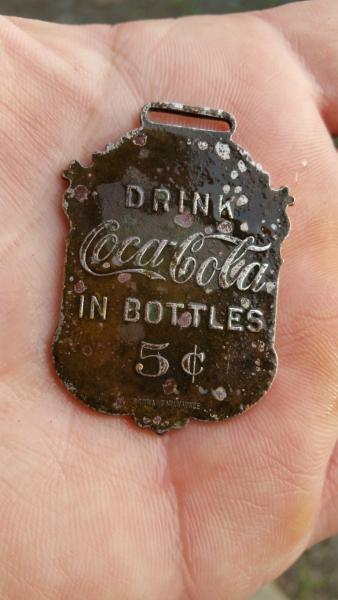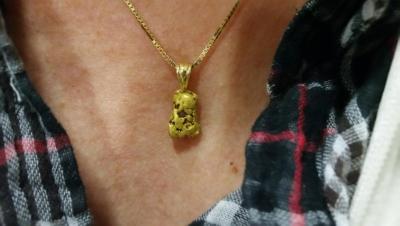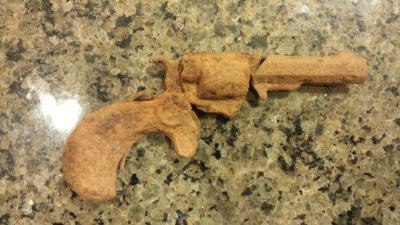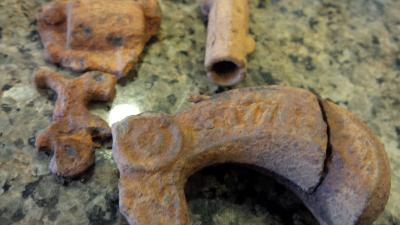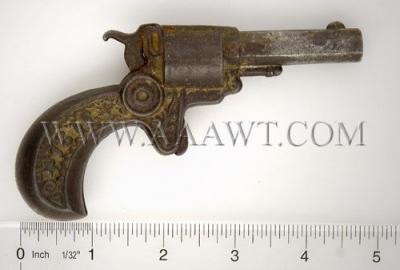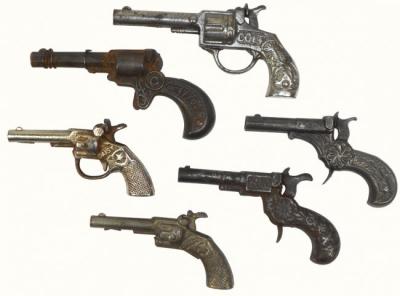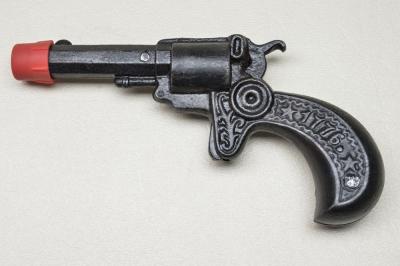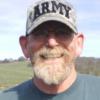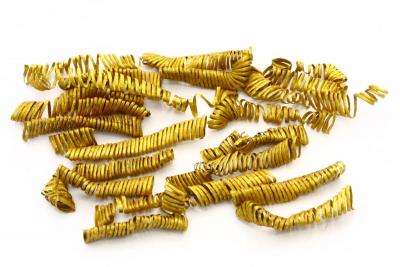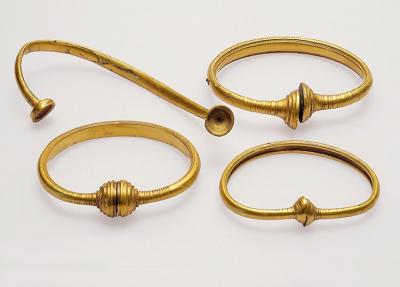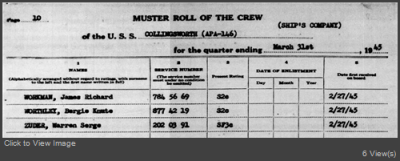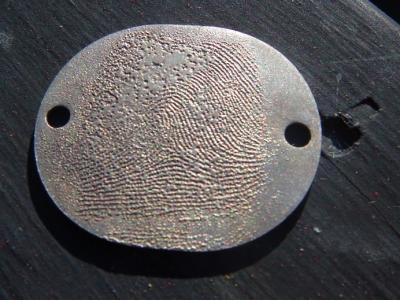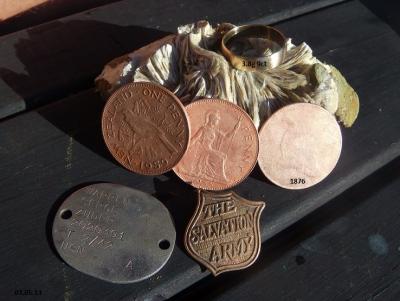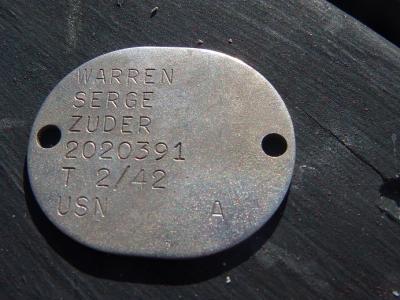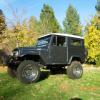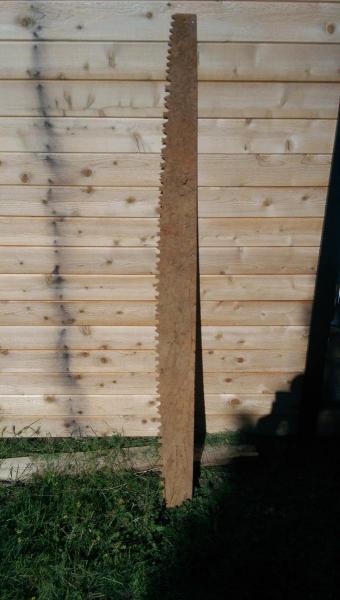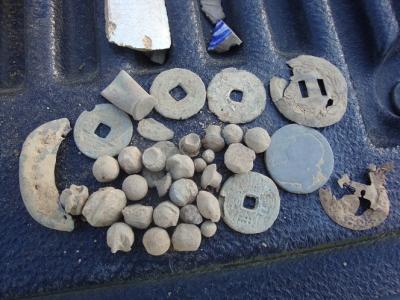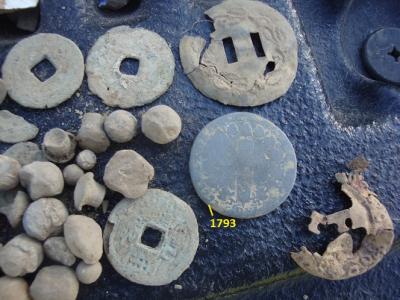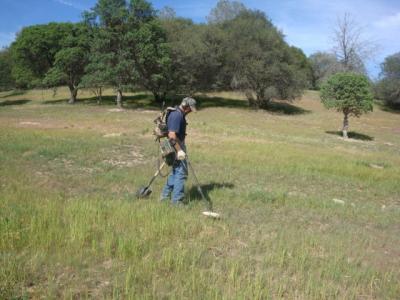Search the Community
Showing results for tags 'relic detecting'.
-
Hi steve Herschbach Sir Hope you are good Sir i want to buy metal detector that can detect upto 15 feet I belong to pakistan Here the soil is mineralized Some people suggested me GPZ 7000 Some suggested the jeo hunter 3d dual pack (made in turkey) I have also searched the BR Royal Analyzer Basic which is launched recently in 2017 Sir i want the best detector thats why i need your help Pls suggest me the best detector . Waiting for your reply Sir
-
"NEW LONDON, Conn. — Keith Wille was metal detecting in the woods of Connecticut a few years ago when he found a triangle of brass about 21/2-inches long with a small hole in the middle. He thought little of the find at first, and threw it in his scrap pile. Wille, 29, is a manager at a survival training company, but spends most of his spare time metal detecting. In September, Wille drove from his home to the Mashantucket Pequot Museum and Research Center with several boxes of objects — the highlights of his recent collecting. The museum — a vast, glassy structure that looks like an airport terminal, complete with a 185-foot-tall traffic- control-style tower — is a testament to the years when the Foxwoods Resort Casino made the Pequots the wealthiest tribe in the nation. Although those fortunes have declined, the Pequots are still financing projects by the archaeologist Kevin McBride, who works full time on what Lori Potter, a spokeswoman for the Mashantucket Pequot Nation, called “history that’s written by the conquered and not by the conqueror.” Inside the museum, Wille unpacked his boxes, displaying items discovered around the Pequots’ homeland: George Washington inaugural buttons, musket and cannon balls, a gold ring, commemorative spoons, a 100-year-old military insignia and the triangle of brass. McBride, the museum’s director of research, and David Naumec, its senior historian, inspected the lot, but were most curious about the crude brass triangle. They knew it was a kettle point, an arrowhead fashioned from a piece of a brass trade kettle (which resembles a pail) — an archaeological signature of the 17th century." Rest of the story with photos
-
-
My buddy Merton was down for a few days and we went hunting. From past experience he tends to get a little grouchy at the parks and beaches so I played it safe and we went relic hunting. We both did well scoring barber dimes and various other trinkets. We had fun when the weather cooperated using our XP Deuces in fast mode. Looking forward to our next hunt..... so I can kick your ass again buddy! Also included in the photos is a nice vintage sterling silver cross that I found at a park a week or so ago. HH strick
-
So I had a good day detecting yesterday and on top of the gold I found I found this little square. Stared at it for a sec then thru it in my pouch to look at it later. Knowing it was not magnetic it kept bugging me. I got home and looked closely in the light noticed it was stamped with a lion and 2 circles. I scratched a little on the back and it started to look yellow. Any idea what it is? How to clean it? Any info would be appreciated.
-
My wife and I were hunting a early 1900's coal camp in southern Colorado this last year and I found this item. At first I didn't know what it was so I did a little research and found out it was a nameplate for a billiards table. Can you image how that billiards table got there and the stories it would tell. This was a first for me. What are some of your unusual finds?
-
You may have noticed when digging around old cabins or campsites that Hills Brothers coffee cans are pretty common. It turns out they can be used to get a rough idea of when the site was in use by noting slight differences in the designs of the cans over time. It was so useful in Alaska that BLM put together a booklet showing can designs from 1900 - 1963 that they could use as an aid in dating Alaska cabin sites. You can download it for free at https://www.blm.gov/style/medialib/blm/ak/aktest/ofr.Par.57416.File.dat/CoffeeCanFieldBook_web.pdf
-
Anyone know much about musket balls, found these a while back on some private land I had a chance to check, the large one has a very heavy lead oxide layer and the lead feels heavier than I expected for its size?
-
Managed to get out last weekend with Merton. We went to my super secret pounded out by every body and their brother for the last 30 years relic spot. Tried every trick we knew. Large coils, small coils, notching up and notching down, gain full blast, gain on auto. manual ground balance and auto ground balance. Heck Merton even brought out his PI machine for a while (a very short while) Highlights were a real nice 1920's Canadian half dime in excellent condition (not in picture as Merton forgets where he puts things) a toasted seated dime, a very good condition religious pendant marked Oct 7 1901 and a 1899 V nickel. The only down side to the whole experience was when Merton told me he now wants to buy a ctx.... I tried telling him that I'm the only guy allowed out there with a ctx...I don't think he cares strick
-
It's been two weeks and only 5 grams in the poke.....for me it borders one leg in the town of Skunkville....hope the other leg don't land in it. I am going to try and split half a day working old tailing piles and the other few hours searching for a new patch. Today was much the same....lead, some iron, and shotgun heads and primer. The shotgun heads sure sound off loud it's at a point I recognize what it is before I dig the target. This time it ended being a nice Horstmann Sons & Drucker 1845 to 1849 Eagle A coat button. from the research I did this evening I understand its very scarce. I have not yet found one on line for sale or a picture of one. Just never know what you dig out !
-
We went back to the Calvary out post where I found the eagle buttons last weekend. This time I was armed with my X-Terra 70. I sold my FoRs CoRe to my buddy because I ordered a FoRs Relic from Chris at AZO...which should be here at the end of the month. So, my buddy, brother, and I armed with two CoRes and an X-Terra gave it a go. No eagle buttons this time but I scored a beautiful silver broach some .56 Spencer cases (one un-fired), Ox shoes, and an old iron wrench. Everybody scored Spencer cases and bullets plus another un-fired Spencer Long. Beautiful weather, great friends, metal detectors, and a great site...Awesome! Silver broach with stones in great shape. .22 Long Rifle compared to it's big rim fire brother-.56 spencer. HH Dean
-
I wish they were gold double eagle coins but I'll take em anyway. These are my first Civil War Federal Eagle buttons. Rare finds in Central Arizona. The one with the "C" in the shield is a Calvary officer's button. This site has been producing other Civil War era relics as well. No old coins...YET. HH. Dean Don't know why the pics are so large?
-
I have been around this hobby for over 35 years and went from the guy that had no idea what ground balance or gain meant to where I am today. It has taken thousands of hours of research and time, putting good detecting habits into practice. I, myself, have been very fortunate to be around some of the best diggers that have ever held a metal detector in their hands. If anyone ever thinks they are the best and they can’t get any better or learn more about what we do, then they are sadly mistaken. To this day I continue to learn every time I turn on and start swinging. Being associated with these guys for the last several years has really given me an insight that very few people will ever have. The team of diggers I work with are some of the best and most successful group you will ever find. Our fearless leader keeps us up to date on new machines and technology to keep us at a level we have attained. Now, how do you become the best detectorist you can be? First of all you must have an open mind and be willing to listen to the right people for instruction. In the past, I have been a involved in both Archery and Bowling to high degree. Those 2 sports taught me a very valuable lesson, if you want to be the best you can be, then learn from the best, someone that is very successful. I spent a lot of money buying the wrong stuff by listening to the “expert” that didn’t have a clue. I have learned how to do research from whom to seek advice. I run into people all the time that are wanting to get better, but they listen to people that have a good line but, don’t have the success to back up their claims. It sometimes is hard to get rid of bad habits, whether it is in your swing or the way you do research. YouTube is nice and there are some good videos and knowledge to be found on the site. However, there is also a lot of wanting to be people giving some not so good advice. It’s important that you as a viewer know the difference. You ask how do I know, again look at what they have found. A few old coins or a couple of gold nuggets doesn’t mean they have the knowledge you seek. Another thing is don’t keep changing the settings on your machine because this guy says it is the best way to do it. Learn your machine from testing buried targets to find out what works to get the best results in your area. There are no magic setting, there is however very good setting to start and work with to get your best performance. You will never be good if you are always changing your detector from this guys or to the next video guy that knows it all. YOU must learn how your machine works and when you need to change settings. Learn the sounds, do not depend on the ID’S # on when to dig. They are for a reference point to what might be the target. It takes years of dedication to understand this hobby. Now let’s talk about the detector that you have or want to get. I get asked all the time WHAT IS THE BEST MACHINE? The simple answer is “none” are the best at every task. And beyond that is what task are you wanting to use the detector. How about the selection of coils (not loops or heads) is compatible with a metal detector. What is the cost of the metal detector and the selection of coils you are going to need for your task? Not everyone can afford the most expensive detector on the market. But, if goal is to be the best nugget hunter you can be and are committed to that end, then, YES the Minelab GPZ-7000 is a machine you would definitely want to consider for Gold Nugget Hunting. To be honest, I am a bit prejudice about the brands of detectors I use so keep that in mind, but I use the one’s I use because they are the machines that I feel are the best for me and the tasks I want use them. That being said, here is what I have for my needs: GPZ-7000 GPX-5000 CTX-3030 FISHER GOLD BUG-2 XP DEUS These are not the only machines but they are my choice, do your research to find yours. THIS IS MY OPINION: Yes, I put in thousands of hours swinging and learning and have found over a thousand gold nuggets and some nice coins and relics. Why did I pick those machines? It is simple for me. When it comes to finding Gold Nuggets, Minelab is unsurpassed for depth on larger nuggets. That is why I have the GPZ-7000 and the GPX- 5000. Those two machines are similar but not the same. There are times when the GPX-5000 will outshine the GPZ-7000 and so that is the one bring out of the truck. If you are hunting nuggets in an area that has had a lot of miners camping and leaving iron items and trash behind, then discrimination may be needed and the GPX-5000 is the detector I want to use. When hunting in the Nevada desert where ferrous items are limited and nuggets of all sizes are possible to be found then the GPZ-7000 is my first choice. I have owned all the Minelab series from the GP 3500 up to the GPZ-7000. The GP series detectors have been the best gold finding detectors of their time. I have been fortune enough to find enough gold to justify the investment and I believe if you have the proper tools to get the job done correctly your chances of success becomes greater. The Fisher Gold Bug-2 is designed to find smaller and shallower gold and mean from fly *#*# to nice gold in the mineralized shallow ground. It is hard to beat the Gold Bug-2 when it comes to finding really small gold, but the Newer Minelab SDC-2300 comes very close but doesn’t have iron discrimination if that is needed. The last detector I use for hunting gold is the XP Deus. Now where would I use a multi purpose coin, relic and gold machine, in tailing piles looking for specimen gold. Again, these are my choices and for tailing piles The XP Deus is not the only detector that is good for the job, the Minelab X-terra 705 is the choice for a couple of the successful team members. When it comes to coin and relic hunting the Minelab CTX-3030 is what I find works best for me. One of the reasons I like this machine because it is waterproof. If you choose to hit the lake or beach you don’t have to worry about getting it wet and it works outstanding in the water while jewelry hunting. It has a good selection of coils to cover your hunting needs. In high iron areas I use the 6 inch coil and if the area it is a more open and uncluttered spot with deep coins the 17 inch monster coil would be the choice. The Stock coil works great for all around detecting conditions. The CTX-3030 or Minelab’s SDC-2300 are some of the best in water looking for those platinum, gold and silver rings. Again, there are other choices, but the CTX has it all and it covers most all of my coil and relic hunting needs. The XP Deus however, is a good choice with very heavy iron where the coins are close to the ferrous objects. I have paid for the XP Deus in a couple spots, finding some very nice targets lying too close to iron that the CTX was unable to find. I always use both units when I am in an area where old goodies are coming out of the ground. Back to how to become the best you can be. It takes hours and hours of using the correct techniques to become consistent in producing good finds. But just knowing your detector and technique is not enough by any means! The first part of becoming successful is doing the research to get you to a good spot. You can’t just always follow your buddies to get you to a good area. If they have been there, then you are looking for the left overs. It is fairly easy to find the cream in a spot, but to find what is below the cream and mixed in with the ferrous targets, or just plain DEEP TARGETS is what we are trying to do. You must put in the time to be successful. Wanting to find older coins and relics, then you have to be at a site that can hold those old items. The local city park is probably not your best choice but can be a very good place to practice honing your skills. The same holds true for a school yard. Lots of targets to get in some practice. With all the junk targets you can perfect your swing speed, coil control and keeping your coil level to the ground all the way through your swing. Learn how to separate targets and look for the deep ones, not the easy ones in the top 4 or 5 inches. Pass those up and leave those for later, but instead listen for the faint deep signals. The deep signals should be the better coins and relics. Look at the ground to see if has been turned over or fill has been added. While driving around look for old trees or stumps that have been there for years. Watch for older homes, especially ones that have bad lawn care. It can increase your chance to detect. Empty lots where old homes once stood. Look for foundations in those lots along with colored glass and trash from days gone by. Research at city hall or the library from where old roads or buildings once stood. Get photos from the era of when the community or mining camp was first started. Look at areas that didn’t have electricity back in the day, especially mine sites. Look for old maps of towns, forts or mining camps that are not on today's maps. The internet is a great source of information, but books and maps are usually the best way to go. As my detecting partner has told countless people, you will spend hundreds and even thousands of dollars buying that perfect detector, but you won’t spend a $100 a year buying research material to get you to those spots no one else finds. They are still out there. Research is all part of learning how to become successful. Coils are always a hot topic. What coil do I need? Well, you need the one designed to do the task you are attempting. If you are looking for shallow small targets, then a huge coil is not a good choice. Same way if you are looking for deep targets a small coil is not correct choice. Are you going to use discrimination, if so, you will need a DD coil. If you are after depth and sensitivity the mono coil is what you will want because they are more sensitive than their DD partners. There is also concentric coils on our coin and relic machines. You need to match the right coil to the task at hand. Smaller coils are designed to find smaller shallow targets. Big coils are made to go deep looking for that Lunker or deep coin, but if there is a small target at depth the big coil will most likely not see it and the small coil can’t see that deep so what does that mean. You simply can’t get them all unless you are scraping off a few inches at a time down to bedrock but we do try. Again, do some testing, if you are a nugget hunter then buy yourself some lead (Bird shot and fishing weights) in different sizes and put them in the ground at different depths and TEST!!! Coin hunters bury those coins in the ground so you can barely hear them. That serves two purposed, practice on faint targets and the opportunity to try different modes and setting to see what works in real life. Air tests are ok, but the mineralization and wetness in the ground tell the real story. That way you know what works and what doesn’t. That gives you the confidence and so you will not have to wonder if your machine and coil combination is correct. You will know! Confidence is a good thing. That is how we all have learned, practice practice practice…. You don’t have to be in the gold fields or a ghost town to become better on your detector. Instead of sitting on your couch go outside and put in some time learning about to make the machine and you work together to be successful. You might be surprised about how you want to get out there and find the get swinging after honing your skill level. If you have a family, what a way to spend some quality time together. And mom and dad you know the kids are going to get better than you. In conclusion, you want to be really good or just so so, the choice is yours. Everyone doesn’t want to be a Pro but if you do, it requires time, energy, investment and a lot of hours swing an digging. Remember, if you want to be the best then learn what you can from the successful hunter. Detector classes give you a huge leap forward to becoming successful. The final word is something I did hear on a video from a fellow digger: “Look of a reason to dig not for an excuse not to dig” Thanks for your time, Rye Patch Ron PS: Always fill in your holes, ask permission and leave it as good or better than before you dug.
- 13 replies
-
- 13
-

-
- best detector
- coin detecting
-
(and 1 more)
Tagged with:
-
Hunted an old home site/mine this morning with the Fores CoRe. I've hunted this place a couple of times before and I'm getting it figured out. This was my best hunt here yet. The CoRe is great for picking the good stuff from the bad. Today was the day for old, large caliber (52 cal), rim-fire cases both rifle and pistol (41 cal). One not fired! The Webelos neckerchief slide is really cool. The shotgun head stamp says Peters/Victor. Never found one like this before. The large disc is from a silver slag pour I found there last time. They did some small time smelting as I have found some copper slag as well as this silver pour. It was dirty and had stuff stuck in it so I melted it, cleaned it up some, and poured it in to a round mold. This is the second silver pour I have found. I'm really liking the CoRe for this kind of work (play) . Good luck! Dean
-
I've been hitting a couple old relic spots lately. One of the better finds I wanted to share with you all. I had never heard of the "California Midwinter International Exposition" till I found this Medallion a couple weeks ago. Turns out it was the Worlds fair in 1894. https://en.wikipedia.org/wiki/California_Midwinter_International_Exposition_of_1894 The area I was hunting was an old town on the delta......the traces of which have been erased by mother nature and man long ago. The tokens and watch fob were found in a couple other spots that time has been more kindly too. Finally since this a prospectors website....I wanted to show off the beautiful Gold Pendant that I had Steve "aka El Dorado" make for Lisa. It was from a nugget I found up in the high country this past Summer. Thanks for looking. strick
-
Pardon my posting a cross-link, but Keith Southern started a thread over at Dankowski's forum that is too special to pass up. Following the drywashers and prospectors and miners, we are walking in the footsteps of the pioneers and even the original inhabitants of our continent. Keith is a great example of a detector ehthusiast who has developed and educated himself to be a real historian. Have a look of you like. I think that this is an impressive example of where the detector users of the future will go. http://www.dankowskidetectors.com/discussions/read.php?2,97948
-
I went out to a field near me that has yielded lots of gold over the years but not much recently. There is still gold there, but it is few and far between. I had my 7000 and Whites GMT. I was in an area that was just packed with trash so I pulled out the whites to try to pick through it and find some non-ferrous targets. I guess there was just too much iron in the soil because lead bullets and even my gold sample glued to a poker chip showed 50-75% on the iron scale. I had found a stirrup in this area two years ago, and since I really couldn't distinguish ferrous from non-ferrous targets I figured I would look for some relics. I soon found a screaming target louder than the rest. I pulled it out and it was a small piece of cast iron that I could barely make out the numbers 1776. I knew their was no way it could actually be from 1776 though. I kept digging in the area and then found the other half to the first piece and it looked like the handle to a derringer. This was pretty exciting so I kept digging the area and found 4 more pieces, the hammer, two halves of a barrel and another piece that I could not tell what it was. I could tell that it was not a real gun, just a toy, since the barrel was in two halves. When I got home I did a web search and found examples of the toy in just a few minutes! It ended up being a cap pistol made in 1876 for the centennial. The other side of the handle has 1876 on it but it is too rusted to make out. Here is a short description of the cap gun and pics of some in good shape, with my find at the bottom. The picturs are of the S1.1.1 but I measured mine and since it is about 5.25" long it looks like it is the S1.1.2. Since I don't look for relics, I usually don't find them. Even though it was not gold and it is rusted and broken this is one of my coolest finds and it was pretty neat to find out exactly what it was. Stevens "1776 - 1876" Centennial Cast Iron Cap Gun made in 1876 S1.1.1 with a three star rating for rarity as described in the book Cast Iron Toy Guns and Capshooters by Samuel H. Logan and Charles W. Best. The Stevens "1776 - 1876" is a single shot single action capshooter. There are two that are almost exactly the same and they are identified as S1.1.1 and S1.1.2 in the book Cast Iron Toy Guns and Capshooters by Samuel H. Logan and Charles W. Best. The only difference between the two is the size. This one is the smaller of the two by 1/2 of an inch. It is 4.75 inches in length.
-
Apart from several kilo's of scrap metal some interesting items have come to the surface while digging targets in the Australian goldfields The coin is an 1846 sixpence and was found in Victoria The object is, I think, the top of a walking cane. It is brass and is weighted with lead in the domed end. I found this with an SD2200 down about 2 1/2 ft with a 18 inch elliptical mono coil These are lumps of natural copper that I dug up in northern South Australia in a very small long forgotten goldfield The same location produced some nice clear quartz The same location also produced some nice lava samples including this section of lava tube What interesting things have you found? Cheers Peter
-
Look Guys I found this site by accident and I am not sure if they are serious or taking the P, So can one of you translate this huge amount of confusion tell me what you think,lol. there are many stories there, one after the other referring to UK Detecting and US Detecting, is this for real or not ?? John. http://thedailydetectorist.com/
-
What a great find. I am always amazed as to how the ancients worked gold like they did///// http://www.thehistoryblog.com/archives/37420
-
Pic showing four out of a total of 10 gold bracelets or armbands or the like which a detecting pair found in one field in Denmark. Total weight of gold is 3.5 kg or 7.7 pounds - 113 ounces troy. 3,500 one gram nuggets - ouch! These object are from the Bronze Age - 1500 - 500 BC Only catch. By law in Denmark this is National Heritage Treasure. The finders and the landowner will recieve a payment based on the value of the metal.
-
So today I was out detecting at the beach here in Auckland NZ. I found some old coins a 9ct ring and and importantly a WWII dog tag. I posted about my finds on a local forum (paydirt) and a member of that forum suggested I also post the find here. The reason for posting about the dog tag here is that someone on here may be able to track down relatives of the solider that lost this tag and reuniting them. If anyone could be of help that would be cool. I have attached a few photos and a link to an obituary for the solider that provides some info. Thanks in advance for any help!!
-
Can honestly say I haven't found one of these before LOL. I was out getting a little more time on the F75 LTD2 looking for an old 1800's fairgrounds. Wasn't getting targets in this area until I came across this. I swung across the end of it when I found it. I thought it was another horse shoe. It was completely intact and about 7' long until my dumbass started digging it up. Thought it was just a piece of sheetmetal, pried up on it and snapped about 10" off one end. I know it's not worth anything but I think it's a cool find. I have tons of axe heads etc., now I have a saw LOL. The wife just loves these old rusted treasures I haul home....REALLY :-) Kenny
-
Over the years of prospecting. Weather it be dredging, highbanking, detecting. I've came across to strange finds in my pursuit of the elusive gold. I've found a fish hook in the desert. A gold bridge with a few teeth in it while dredging. A hot wheels car. Miles from any road.
-
Have tested the GPX at an old site and picked up several pistol balls but this really was my first serious all day relic hunt with the GPX 5000, Got out for a day up in gold country, Wasn't planning on going just worked out unexpectedly getting together with a newbie in metal detecting from the area. In fact, I need to get Ray from Ca. and Lawernzo out there too hopefully soon time is against us with snakes and tall grass. With the Newbie, Had offered to help him with his detector in the future and if he was game for relic hunting lessons to give me a call, He calls me 2-3 days ago after getting permission from his wife and turns out yesterday (SAT) was perfect. So up the hill we go packed with our gear, Go over to the property owners home and introduce David to the owner. From there , Off we go into relic tertiary on the 1500 acre property. David did extremely well being his first time relic detecting, He scored four Chinese cache coins, Several pistol balls and his first powder flask top. At the time, I had picked up four cache coins too and a couple of broken pieces of Chinese coins, Several pistol balls and a few other interesting finds with the GPX 5000 using the 5"X10" DD commander coil. Before we new it was getting late, Long hike back to my pickup and as we were starting to leave he mentions let's stay longer. It's getting late and I remember finding another patch of ground 8-9 years ago from a brief sampling digging several square nails, So rather than stay and continue hunting mentioned to David of another site about 1 mile hike away and through a forest of trees was a meadow with great potential. We arrived at the meadow, Unpacked our gear and started to detect. Square nails everywhere great we're on the right ground, David is using a Whites V3 and I'm still swinging the GPX. Later, Switched over from the GPX after working the outer areas going to the Deus to work the inner area of the meadow laced with iron. When I say Laced with iron that's an understatement the inner area is thick with iron and rusted tin about 70-80% of digging was iron or rusted trash, But the new comer to relic detecting didn't care he was digging up gold rush era finds even if it was mostly iron. Somewhere between this mess of iron, got a clean signal and what popped out really surprised me. What looked like a quarter half dollar size coin was the prettiest target I've seen all day, new it was coin but what was it and based from the size it had to be foreign. From help of others on another forum, The coin is a 1793 King Louis XVI 12 Deniers France Coin 18mm and made of bronze my first bronze coin find in my career. Have to share the GPX is one dynamite PI, So glad to have made the investment it's one serious relic machine. Wanted to slap on the 11" DD but was having so much fun with the 5"X10" DD commander for this type of hunting it stayed on. Also, Have heard from several GPX users and even the manual states Coin/Relic mode will not work in mineralized soils. For some reason my 5000 has no problem it handles this poor dirt well in fact was running Gain pretty high normally between 14 to 20 Gain in Coin/Relic mode. Looking so forward to getting out more often with the GPX and my trusty ATX, Both are well worth the investment. An adventures day for sure, Got my first bronze coin in my career. HH, Paul (Ca)

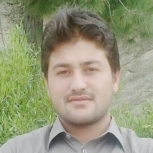


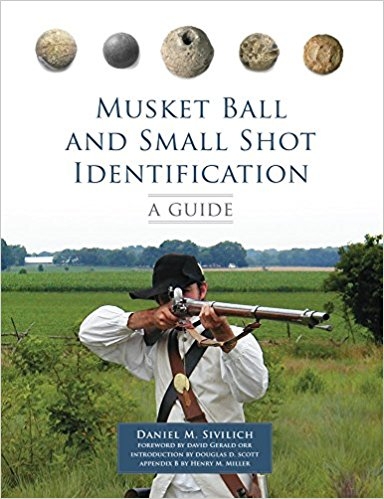

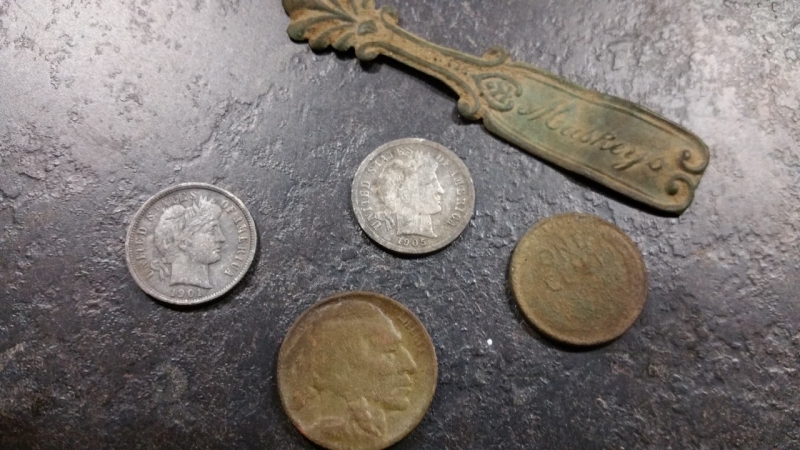
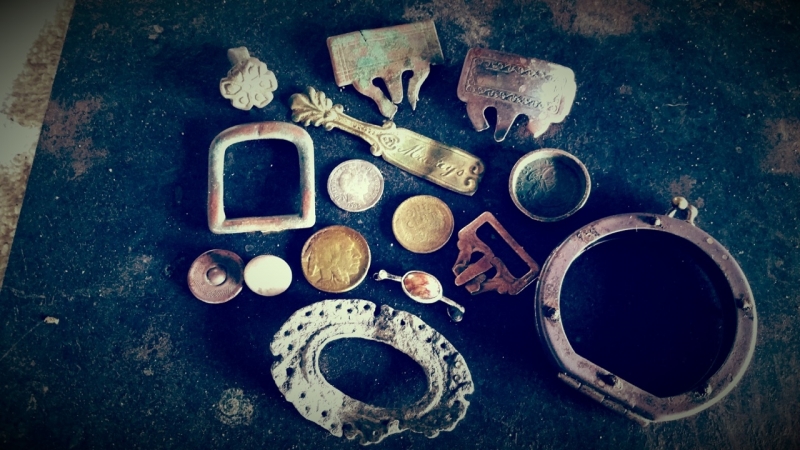
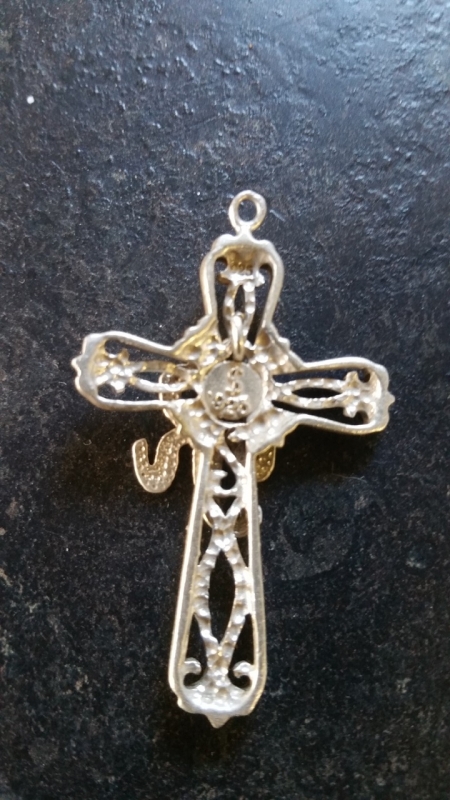
.thumb.jpg.23263a928745997455026e7cb77fb93a.jpg)
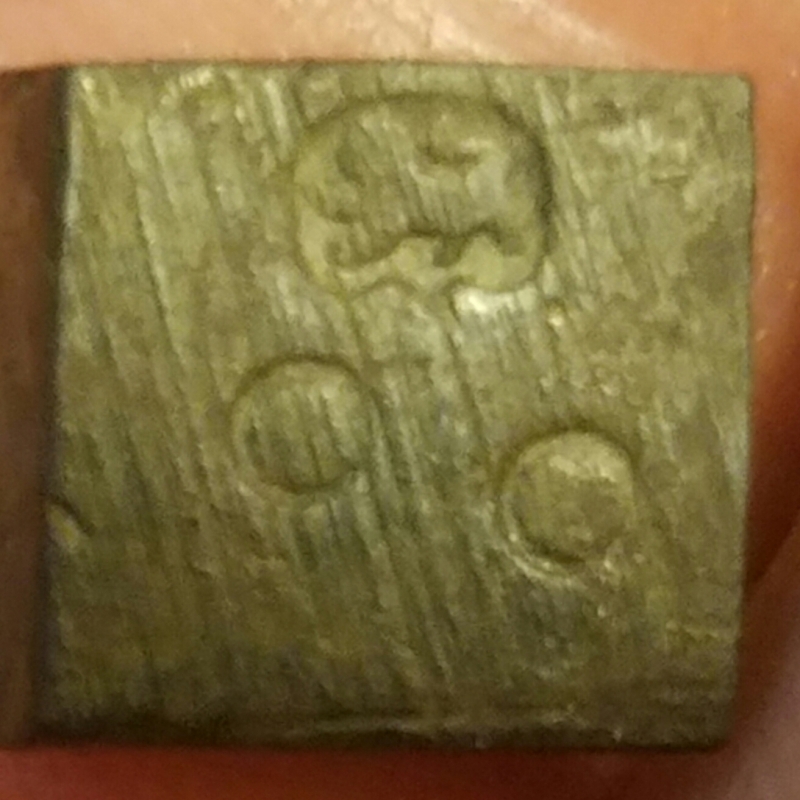
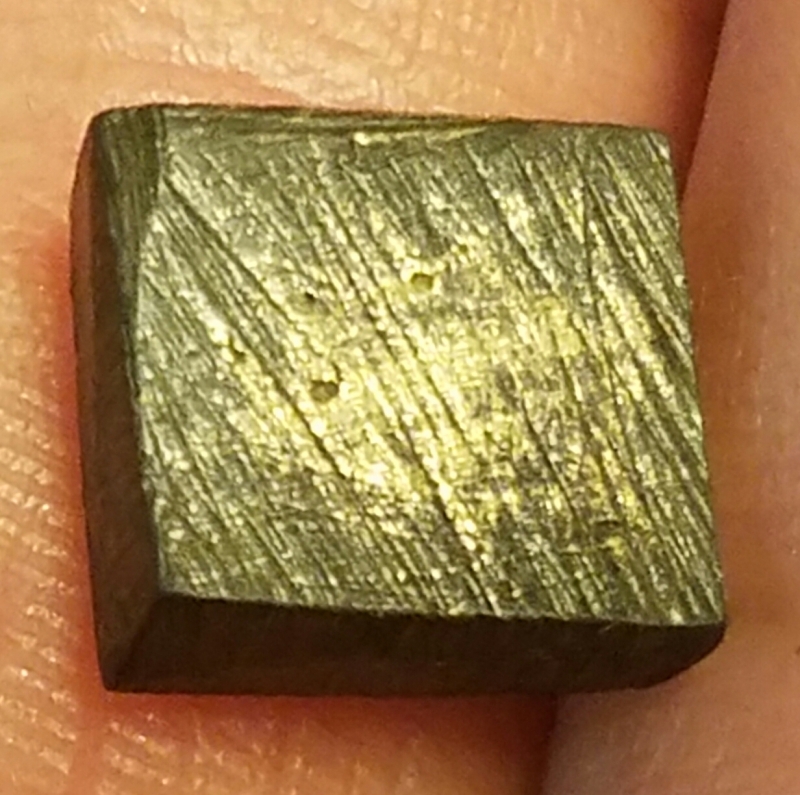
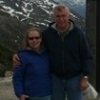
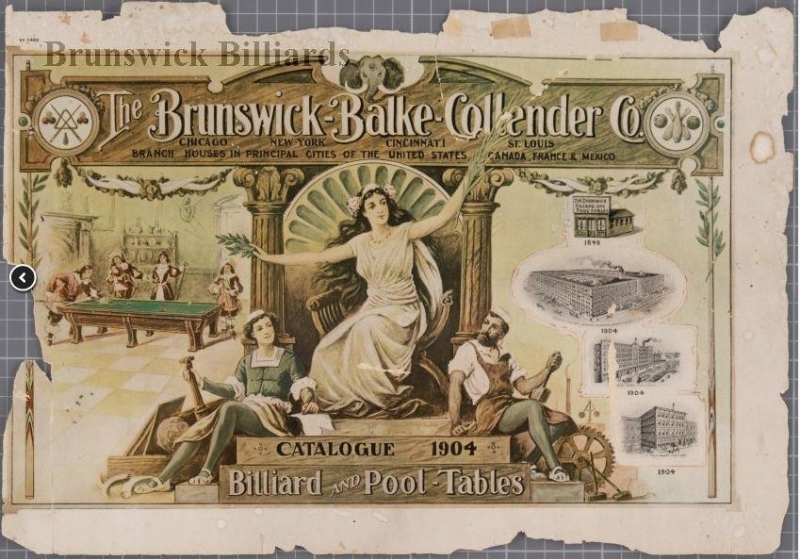
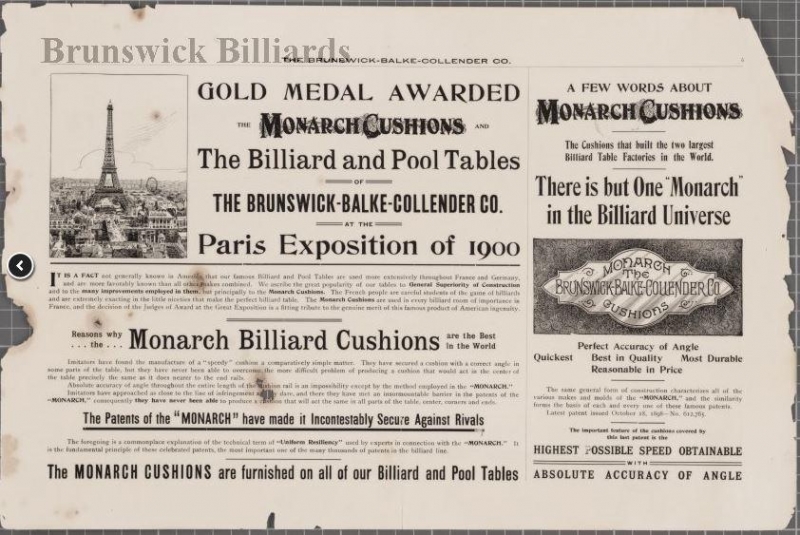
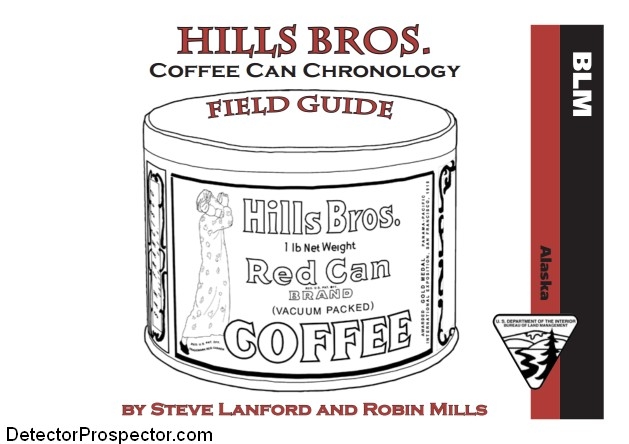
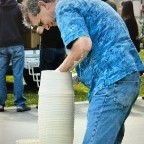
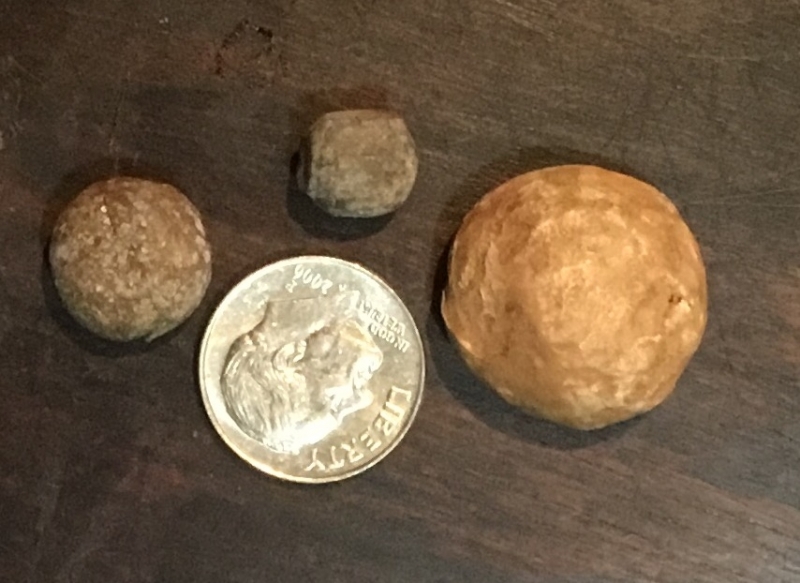
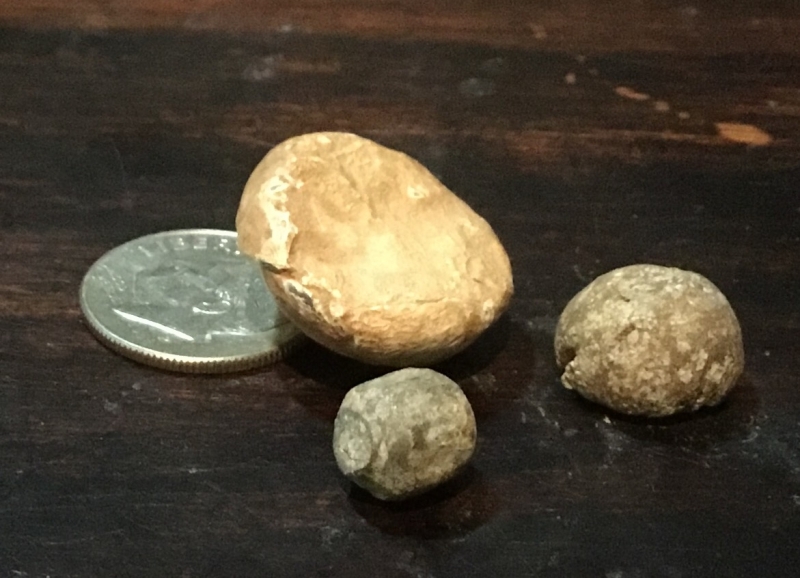
.thumb.jpg.c922921880c2fbe51875e57bf3b16542.jpg)
